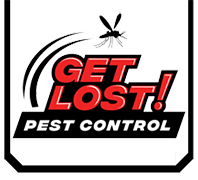Did you know that paper wasps are smaller than European wasps and are generally non-aggressive unless their nest is threatened?
Paper wasps are fascinating creatures that are found in both Australia and Idaho. With their distinctive appearance and unique nesting behaviors, they play an important role in our ecosystem. Let’s explore some key facts and insights about paper wasps to learn more about these stinging insects and how to coexist with them.
Key Takeaways:
- Paper wasps are smaller than European wasps and are generally non-aggressive unless their nest is threatened.
- They have a distinct appearance with yellow/orange bands on their slender bodies.
- Paper wasps build nests in the shape of an inverted cone using saliva mixed with wood fragments.
- They are found in various habitats including urban areas, forests, and woodlands.
- Understanding paper wasp behaviors and taking necessary precautions can help minimize the risk of stings and coexist with these beneficial insects.
Characteristics of Paper Wasps
Paper wasps exhibit distinct characteristics that make them easily identifiable from other wasp species. Understanding their physical attributes can help in proper identification and differentiation.
- Size: Paper wasps range in size from 0.7 to 1.0 inches, with some variations depending on the species.
- Body Shape: They have a slender body with a narrow waist, giving them a distinct appearance.
- Coloration: The coloration of paper wasps includes black, yellow, and red markings. However, the exact patterns and color variations may differ among species.
- Hind Legs: Paper wasps possess elongated hind legs, which are more pronounced compared to other wasp species.
- Wings: They have membranous wings that allow for agile flight.
These unique characteristics collectively contribute to the distinguishable features of paper wasps and aid in their physical identification.
Paper Wasp Characteristics Table
| Characteristics | Description |
|---|---|
| Size | 0.7 to 1.0 inches |
| Body Shape | Slender with a narrow waist |
| Coloration | Black, yellow, and red markings |
| Hind Legs | Elongated |
| Wings | Membranous |
Paper Wasps in Idaho
Paper wasps are a common sight in the state of Idaho. They have adapted to the local habitats and can be found in various locations including gardens, parks, and wooded areas.
One of the distinctive features of paper wasps is their ability to build nests in sheltered locations. These nests are constructed using chewed wood fibers mixed with saliva, resulting in a paper-like substance. In Idaho, paper wasp nests can be found on tree branches, eaves of buildings, and even outdoor furniture.
It’s important to note that paper wasp nests in Idaho are annual and are abandoned at the end of each season. This means that new nests are built every year, ensuring a fresh start for the wasp colonies.
To gain a better understanding of the distribution and prevalence of paper wasps in Idaho, let’s take a look at the table below:
| Location | Frequency |
|---|---|
| Gardens | High |
| Parks | Medium |
| Wooded areas | High |
| Urban areas | Low |
As seen in the table, paper wasps are most commonly found in gardens and wooded areas in Idaho. Their presence in parks is moderate, while urban areas generally have a lower frequency of paper wasp habitats.
Now that we have explored the paper wasps’ presence and nesting habits in Idaho, let’s move on to the behaviors and interactions between paper wasps and humans in the next section.
Behaviors and Interactions with Humans
Paper wasps, known for their distinctive appearance and stinging ability, exhibit specific behaviors when it comes to their interactions with humans. Understanding these behaviors is crucial for minimizing the risk of stings and ensuring a harmonious coexistence with these beneficial insects.
Paper Wasp Behaviors:
- Paper wasps are generally non-aggressive towards humans unless provoked. They prioritize their primary food source, nectar, but they also catch caterpillars to feed their larvae. This dual feeding behavior demonstrates their role as both pollinators and natural pest control agents.
- When paper wasps feel threatened, they may exhibit defensive behaviors. This includes buzzing around the perceived threat, releasing alarm pheromones to alert other colony members, and, if necessary, stinging as a defense mechanism.
- Upon detecting a threat, paper wasps typically assume an aggressive posture by spreading their wings, raising their abdomen, and emitting clicking sounds.
Interactions with Humans:
To avoid paper wasp stings, it is important to take necessary precautions:
- Keep food and drinks covered when dining outdoors to prevent attracting paper wasps.
- Avoid wearing bright-colored clothing, floral patterns, or excessive perfume, as these can attract paper wasps.
- Be cautious when approaching areas where paper wasp nests are present, whether they are in trees, eaves of buildings, or outdoor furniture. Give nests a wide berth, as disturbing them can trigger defensive responses.
Properly identifying paper wasps is essential to avoid mistaking them for other stinging insects commonly found in Idaho. Though they share similarities in appearance, distinguishing paper wasps from yellow jackets or hornets is crucial, as their behaviors and nest characteristics differ.
By adopting these precautions and understanding paper wasp behaviors, individuals can coexist with these fascinating creatures while minimizing the chance of painful encounters.
Conclusion
In conclusion, paper wasps are common stinging insects found in both Australia and Idaho. They are recognized by their distinctive characteristics, such as their slender bodies, narrow waists, and black, yellow, and red markings.
These insects play a vital role in the ecosystem as pollinators and natural pest control agents. By understanding their behaviors and taking necessary precautions, it is possible to minimize the risk of stings and coexist with these beneficial insects.
If you find yourself dealing with a paper wasp infestation, it is advisable to seek professional pest control services from Get Lost Pest Control for effective management solutions. With their expertise, they can safely remove the nests and mitigate any potential risks. Contact Get Lost Pest Control now for help!






